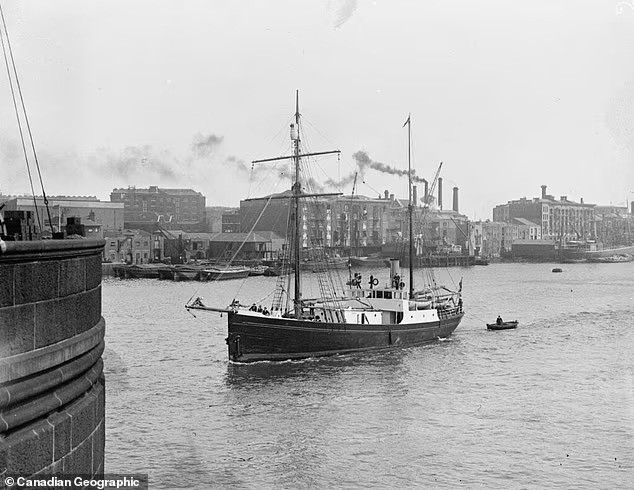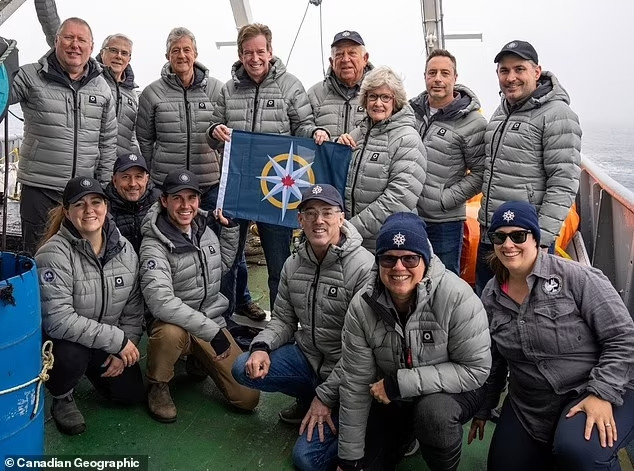Finding the Quest is one of the final chapters in the extraordinary story of Sir Ernest Shackleton
Ernest Shackleton’s last ship has been found, more than 60 years after it sank. The vessel, named Quest, was lying on the sea floor off the coast of Newfoundland. Shackleton, who led three British Antarctic expeditions, died on the Quest in 1922 while en route to Antarctica, although the ship continued to be used until the 1960s.
“Finding the Quest is one of the final chapters in the extraordinary story of Sir Ernest Shackleton,” said expedition leader John Geiger, CEO of the Royal Canadian Geographical Society (RCGS). Shackleton was known for his courage and intelligence as a leader in times of crisis. The tragic irony is that it was the only death that occurred on any of the ships under his direct supervision.
Like it never sank
Mr Geiger led an international team of experts, including world-renowned wreck hunter David Mearns, in a search for the remains of Shackleton’s last ship. Using sonar equipment, the team located the wreckage of the 38-meter-long steamship 390 meters below the Labrador Sea. Remarkably, the wreck is still largely intact and standing upright on the seabed, despite the area having previously been swept by ‘passing’ icebergs. Apart from a broken mast hanging over the port, explorers found that the ship was almost exactly as it appeared before it sank. Although Shackleton died aboard the Quest, he was not responsible for its wreck.
“Journey” through the history of the ship
After Shakleton’s death on board, Quest was sold to the Schjelderup family in Norway, where it was commissioned as a seal hunting vessel.
For 40 years the Quest continued to sail without Ernest Shackleton, was used in Arctic rescues and served in the Royal Canadian Navy during the Second World War. At one point, the Quest was even selected to bring Norwegian troops to Svalbard, but suffered engine failure en route. The ship that replaced it was bombed and sunk during the mission.
However, it was during a seal hunt in 1962 that the Quest finally sank, after being crushed by thick sea ice. The Quest was drilled with such pressure that the cabin doors buckled and the engine room deck screws broke. Ironically, this was the exact same fate that befell the ship Endurance, in which Shackleton traveled during his ill-fated Imperial Antarctic Expedition between 1914 and 1917.
Shackleton’s “swan song”.
The ship on Shackleton’s last voyage with the Quest set sail in September 1921, when it set sail from London for the last time. His original plan was to explore the Canadian Arctic, north of Alaska, but he had to change his destination when the Canadian government withdrew financial support. Shackleton immediately set sail for Antarctica, planning to map and collect specimens from the continent’s islands.
Before setting off, Shackleton, now 47, told reporters the mission would be his “swan song”. Unfortunately, the explorer’s words proved prophetic and he died in his cabin four months into the journey, following a heart attack due to extreme stress.
How was the Quest found?
To find Shackleton’s last vessel, researchers combined state-of-the-art technology with information that could be found in historical records. The team examined the ship’s logs, newspaper clippings and legal documents and compared them with historical data on weather and ice.
The researchers were also able to access two logs from the Kvitfjell, the ship that rescued some of the Quest crew.
These logs didn’t reveal the Quest’s location directly, but they did give them a frame covering 24 square nautical miles of where they thought the ship might be.
Although the team’s calculations turned out to be almost accurate, their mission had problems. After an unscheduled stop for repairs, the mission had only 24 hours to complete its search before reaching the target area. With less than 7 hours to go, sonar equipment finally revealed Quest’s outline on the seabed.
“I can confirm that we have found the wreck of the Quest,” said David Mearns.
“The data from the high-resolution sonar images exactly matches the known dimensions and structural features of this particular ship, and is also consistent with the events at the time of the sinking.”
Source :Skai
With a wealth of experience honed over 4+ years in journalism, I bring a seasoned voice to the world of news. Currently, I work as a freelance writer and editor, always seeking new opportunities to tell compelling stories in the field of world news.












